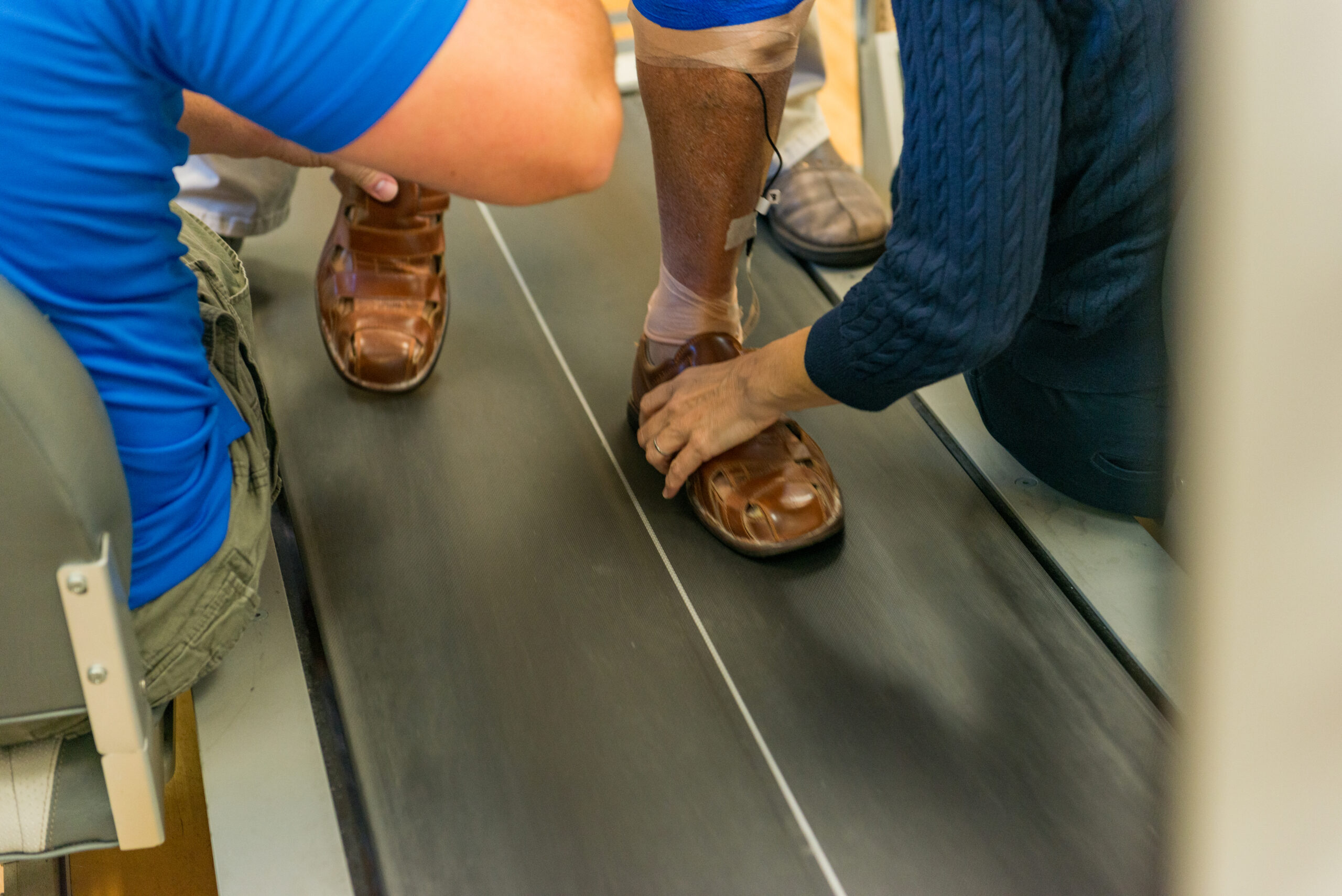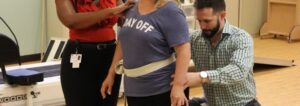Walking Asymmetry

Back to physical health resource hub
Christy Conroy, PT, MSPT, NCS, Center Manager of the Brooks Motion Analysis Center, recently shared her expertise on walking asymmetry with journalist, Carolyn Steber, at bustle.com.
Conroy shared:
When individuals walk with an asymmetrical pattern, this means the steps they take with each leg are slightly different. Perhaps your stepping stride is longer on one side than the other, or you don’t stand on one leg quite as long as the other as you walk. This can occur for many reasons, such as uneven leg lengths, altered foot positions on one side, changes in the alignment of the back or pelvis, or simply from pain that alters your stepping pattern. Asymmetrical walking can lead to pain anywhere in the body.
Anytime your foot hits the ground it is a chain reaction all the way up the body. For this reason, even problems at the big toe can cause pain up in the back. These issues can promote chronic pain or arthritis as just a couple examples. Therefore, it is often a goal of physical therapy to assess an individual’s walking pattern to identify key impairments that can be addressed through strengthening or stretching techniques, or even orthotics that would slide in a shoe.
One thing that can be done is to ensure good flexibility and strength in both legs that seems relatively similar. For example, can you lift both feet up toward your nose evenly or does one side seem tighter than the other? Perhaps the calf muscle is tighter on one side. Can you stand with your legs positioned evenly while both knees remain straight? If not, then perhaps there is a minor leg length difference. Many things are very difficult to assess on yourself, so it is important to see a professional who can help determine the origin of your pain or asymmetry. Then, it’s all about following a quality exercise program that speaks directly to your key impairments.
If there are muscle imbalances, this takes time, but if you follow the recommended program, you should easily start to notice subtle differences in a week or two. If the recommendation is a particular orthotic for your shoe, then you could feel changes almost immediately, or at least in a day or two. So, get walking and see if you are symmetrical. And if not, let’s fix it!
For more information, check out the full article at:


